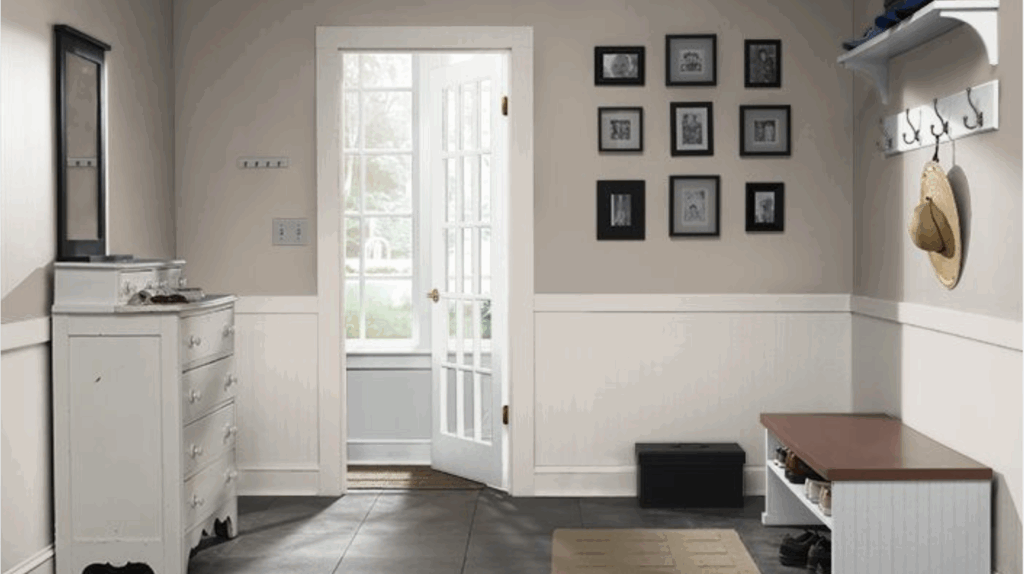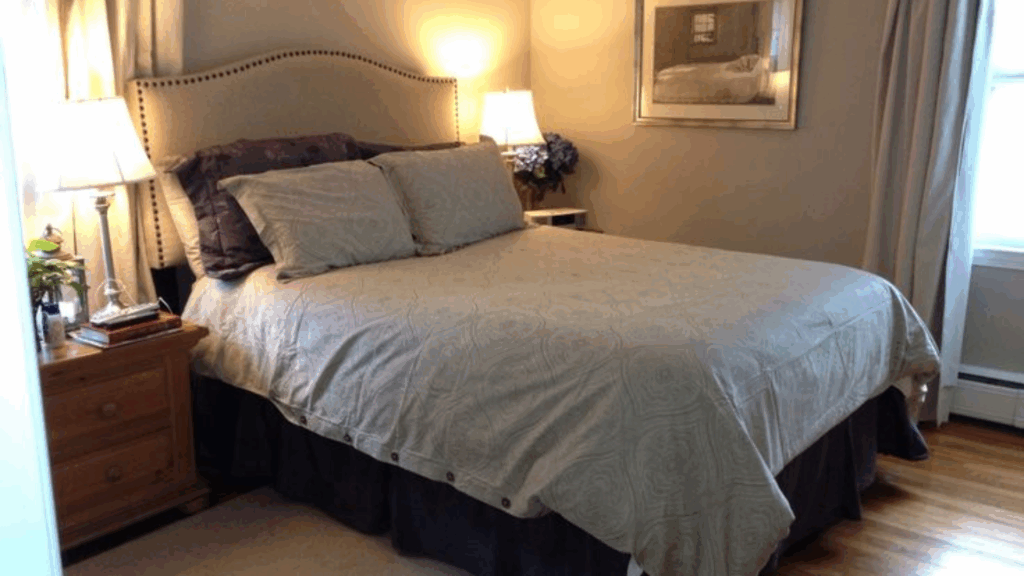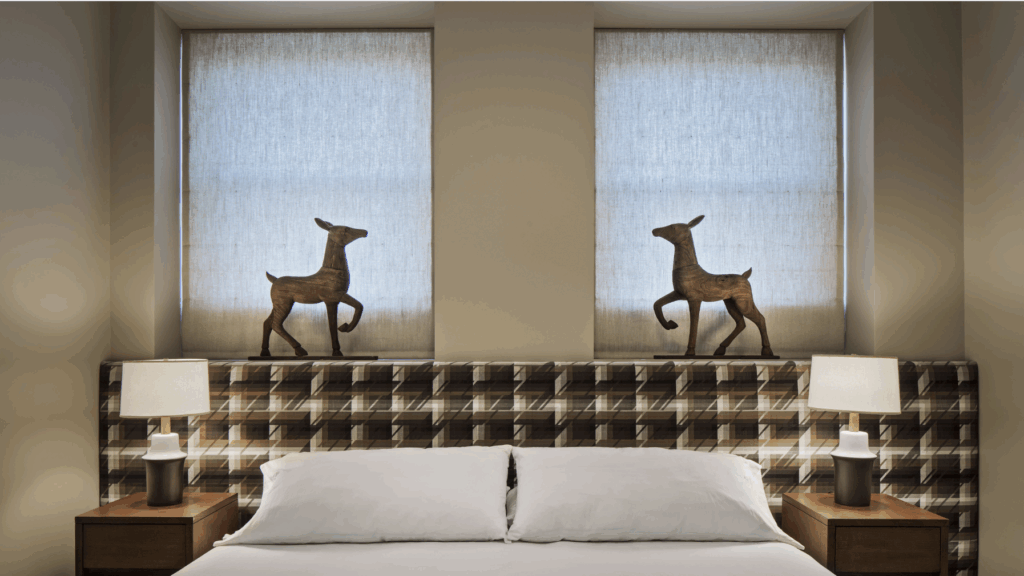Ashen Tan by Benjamin Moore is a calm, soft beige that brings a quiet warmth to any room. If you’re looking for a wall color that feels clean but not too bright, this one might catch your eye. It sits between beige and gray, making it feel grounded without being dull.
In this blog, you’ll learn everything you need to know about Ashen Tan. We’ll talk about its undertones, how much light it reflects, the feeling it creates in a space, and the rooms where it works best.
You’ll also get ideas on what colors, floors, and furniture go well with it. This shade is a good choice if you want something easy to live with that still adds interest. It doesn’t shout for attention, but it helps a space feel put together.
If you’re unsure what neutral to try, this guide will help you decide if Ashen Tan is the right fit.
Why Ashen Tan Is the Perfect Choice for Your Space?

Ashen Tan by Benjamin Moore brings a gentle, natural look to your walls. It’s the kind of color that helps a room feel settled without pulling too much attention.
This soft beige sits comfortably in the background while still adding depth to your space. It’s a shade that works in homes that lean modern, traditional, or somewhere in between.
- The soft, beige tone has a quiet warmth that feels inviting.
- It stays steady in different lighting, from bright sun to low lamps.
- Matches well with both warm tones like gold and brown, and cool tones like gray or blue.
- Doesn’t overpower other design elements and lets other features stand out.
- Offers a peaceful feel that works well in both large and small spaces.
Ashen Tan is a smart choice if you’re after a wall color that blends easily and brings comfort into your home without being boring.
The Rich Undertones of Ashen Tan
Ashen Tan may look like a soft beige at first glance, but it carries more depth than that. It has subtle gray and taupe undertones that give it a grounded, calm feel.
These undertones help the color work well with a wide range of other shades in your home.
Like many neutral paints, Ashen Tan changes a bit throughout the day. In bright daylight, it can look more creamy. Under softer light, the gray tones show up a little more, giving the room a cozier look.
That’s why it’s a good idea to test the color before painting the full room. Put a sample on a few different walls and watch how it looks in the morning, afternoon, and evening.
This small step helps you feel more confident in your choice and avoids surprises later.
The Light Reflectance Value of Ashen Tan
Ashen Tan has a Light Reflectance Value (LRV) of 50.72. This number shows how much light the paint bounces back. A value of 0 means pure black, and 100 means bright white. Ashen Tan sits close to the middle of the scale.
This level means it reflects a moderate amount of light. It won’t brighten up a dark room as much as a lighter shade, but it also won’t make a space feel closed in. It creates a gentle, steady atmosphere without feeling too strong.
Rooms with some natural light are a good match for this color. It softens direct sunlight without looking too dull. In lower light areas, it adds depth and keeps the space from feeling washed out or cold.
The Psychology of Ashen Tan: How It Affects Your Mood
Colors can shape how a room feels, and Ashen Tan is no exception. This shade brings a steady and calming tone to any space. It doesn’t feel loud or too bold, which helps you relax and settle in.
Ashen Tan gives my space a sense of quiet balance. It can make a room feel more put together without much effort. It works well when you want your surroundings to feel calm and easy to be in.
This makes it a great choice for areas meant for rest and focus. Bedrooms, reading nooks, or home offices all benefit from a color like this. It helps keep the mind at ease and sets a peaceful mood for everyday life.
Where Is Ashen Tan Best Used in An Interior?

Ashen Tan is one of those rare paint colors that works beautifully in almost any room. It has a clean, soft look that doesn’t feel cold or sterile, and it adapts easily to both active spaces and quiet corners.
Some colors can feel overwhelming or too bold, but I love how Ashen Tan keeps things balanced and comfortable wherever it goes. It’s subtle without being boring, and that makes it a favorite in both modern and traditional homes.
1. Bedroom: Calm and Restful
I find Ashen Tan especially soothing in bedrooms. Its gentle tone helps create a peaceful, restful environment that’s perfect for winding down.
It pairs well with soft bedding, natural fabrics, and warm lighting for a cozy retreat. Even small bedrooms feel more open and serene with this color on the walls.
2. Living Room: Warm and Inviting
In the living room, Ashen Tan helps the space feel more relaxed and welcoming. It’s neutral enough to work with a range of furniture styles and colors, but still adds warmth and character to the walls.
Whether your style leans casual or a bit more polished, this shade finds a way to fit right in.
3. Entryways and Hallways: Open and Airy
Hallways and entryways often lack natural light, but Ashen Tan can help brighten these spaces. It gives a soft, fresh appearance that makes them feel more open without being too stark.
It’s a smart way to bring light into transitional areas while keeping a consistent flow with the rest of the home.
4. Accent Walls and Full Rooms
Whether I use Ashen Tan on every wall or just as an accent, it always softens the look of a room. It’s a great way to break up stronger colors or tie together different parts of the home.
You can easily pair it with bolder hues, textured finishes, or even wallpaper for a layered, stylish effect.
5. Flexible for Open Floor Plans and Small Rooms
Ashen Tan blends seamlessly in open floor plans, creating a consistent, natural flow from one space to the next. But it also shines in smaller, cozy rooms where you want a subtle but warm backdrop.
It adds just enough character without overwhelming the space, making it an ideal pick for anyone who values flexibility and ease.
This shade is perfect for tying multiple areas together while still giving each space its own soft personality.
What Kind of Floors Would Look Best with Ashen Tan?
Finding the right floor to match your wall color can be tricky, but Ashen Tan makes it much easier. It pairs well with a wide range of flooring types and finishes, making your design choices feel more open.
Whether your home has wood, tile, or carpet, this paint color helps tie it all together. Best flooring matches for Ashen Tan include:
- Light wood floors like oak or maple keep the space feeling bright and clean.
- Medium-tone wood adds depth and creates a nice contrast without feeling too dark.
- Neutral tiles like cream, beige, or light gray blend softly with Ashen Tan.
- Stone floors in soft earth tones make the room feel warm and grounded.
- Rugs in tan, ivory, or charcoal help add texture without clashing.
Ashen Tan gives you a solid starting point for your room design. With the right floors, the color brings balance and calm to your space without feeling dull or flat.
How to Incorporate Ashen Tan Into Your Home Decor?
Ashen Tan makes decorating feel simple. It works well with furniture in white, light gray, or natural wood. These tones help keep the room soft and balanced.
Metal finishes like brass, black, or chrome add just the right contrast. They bring in a little shine without taking away from the calm feel of the color.
I use cozy fabrics like cotton, linen, or wool to add texture. Curtains, throw pillows, and rugs in warm whites or light browns help the space feel full without being loud.
Ashen Tan gives you an easy base. With a few layers and soft colors, your room can feel pulled together and comfortable.
Ashen Tan vs. Other Warm Neutrals
Ashen Tan is often compared to other soft, warm neutrals like Manchester Tan, Muslin, and Edgecomb Gray.
While they may seem similar at first glance, each one has its own look depending on undertones, warmth, and how it reacts to light. The table below breaks down the key differences.
| Paint Color | Undertones | LRV | Feels Like in a Room | Best Used When… |
|---|---|---|---|---|
| Ashen Tan | Beige with gray/taupe | 50.72 | Soft, calm, and steady | You want a grounded neutral with depth |
| Manchester Tan | Yellow beige | 63.24 | Warm and slightly sunny | You need a warmer look in medium light |
| Muslin | Creamy warm beige | 66.54 | Light, soft, and airy | You want a pale neutral for small rooms |
| Edgecomb Gray | Balanced greige | 63.09 | Light with a subtle gray touch | You prefer a cooler neutral with softness |
Ashen Tan stands out when you want a color that feels steady and a bit deeper than most light neutrals. It brings warmth but stays relaxed, making it a great fit for many rooms in your home.
Conclusion
Ashen Tan stands out because it’s soft, steady, and easy to use in many homes. It doesn’t shift too much under different lights, making it feel safe for long-term use. It also blends well with a wide range of finishes, from wood to metal.
This color works best when paired with natural tones. Light to medium wood floors, cream trim, and warm lighting help bring out its gentle depth. Add layers with rugs, pillows, or furniture in white, black, or tan to complete the look.
Before making a final decision, test it on your wall. Paint a sample and watch how it looks in both daylight and lamplight.
This step can help you avoid surprises. Ashen Tan might be the color that makes your space feel finished without trying too hard. Keep it simple, and let the color do the work for you.

